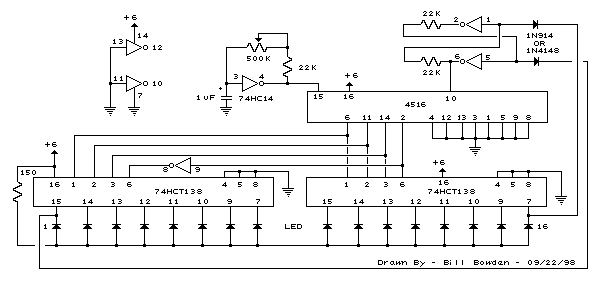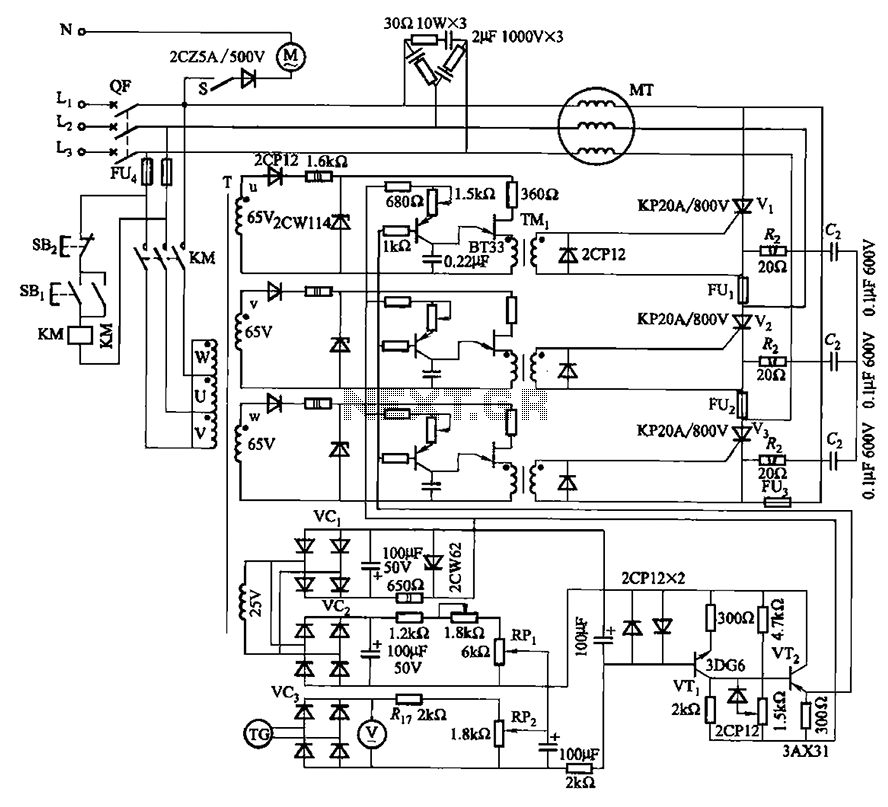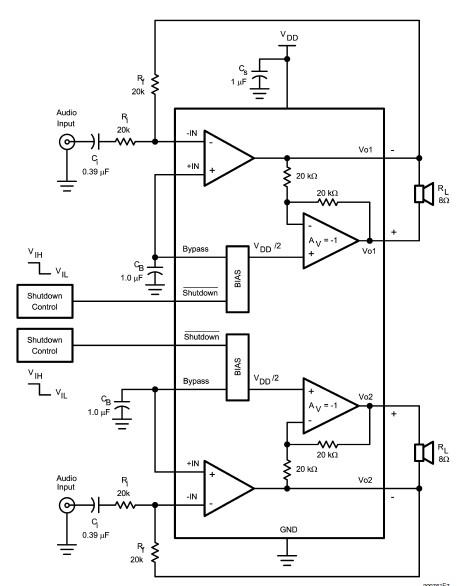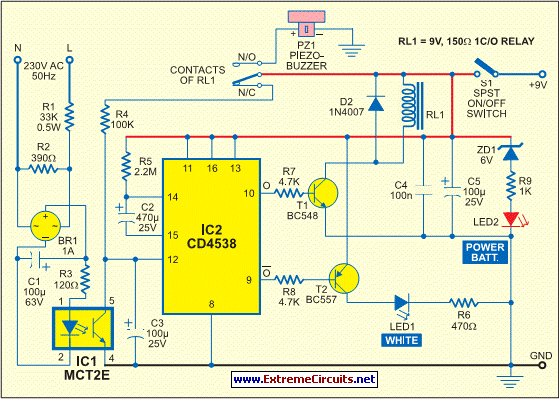
9v stabilized power supply circuit with
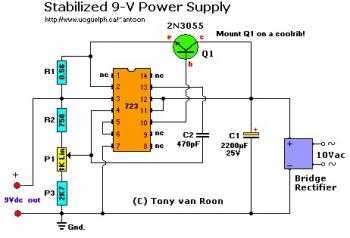
C1 filters the noise and spikes from the AC supply. The circuit can be adjusted to provide a 9V or 12V output voltage, or any other voltage level required by the PC mini drill, using the P1 potentiometer.
The circuit described functions as a power supply filter, specifically designed to eliminate unwanted noise and voltage spikes from an alternating current (AC) source. The capacitor C1 serves as a crucial component in this filtering process, smoothing out fluctuations in the voltage supply. This is essential for sensitive electronic devices such as a PC mini drill, which can be adversely affected by electrical noise.
The output voltage can be adjusted between 9V and 12V, allowing for compatibility with various devices. This adjustment is achieved through the use of a potentiometer, designated as P1 in the circuit. By varying the resistance of P1, the voltage output can be fine-tuned according to the specific requirements of the connected load.
The circuit may also include additional components such as diodes for rectification, voltage regulators to maintain a stable output, and possibly inductors for further noise suppression. The careful selection of these components ensures that the output remains within the desired voltage range while minimizing ripple and noise to provide a clean and reliable power supply for the PC mini drill or similar devices.
Overall, this circuit exemplifies an effective approach to power supply design, emphasizing the need for voltage stability and noise reduction in electronic applications.C1 filters the noise and spikes off the AC. Adjust the circuit for 9V or 12V output voltage, or whatever voltage level your pc mini drill is using, with the P1 potentiometer. 🔗 External reference
The circuit described functions as a power supply filter, specifically designed to eliminate unwanted noise and voltage spikes from an alternating current (AC) source. The capacitor C1 serves as a crucial component in this filtering process, smoothing out fluctuations in the voltage supply. This is essential for sensitive electronic devices such as a PC mini drill, which can be adversely affected by electrical noise.
The output voltage can be adjusted between 9V and 12V, allowing for compatibility with various devices. This adjustment is achieved through the use of a potentiometer, designated as P1 in the circuit. By varying the resistance of P1, the voltage output can be fine-tuned according to the specific requirements of the connected load.
The circuit may also include additional components such as diodes for rectification, voltage regulators to maintain a stable output, and possibly inductors for further noise suppression. The careful selection of these components ensures that the output remains within the desired voltage range while minimizing ripple and noise to provide a clean and reliable power supply for the PC mini drill or similar devices.
Overall, this circuit exemplifies an effective approach to power supply design, emphasizing the need for voltage stability and noise reduction in electronic applications.C1 filters the noise and spikes off the AC. Adjust the circuit for 9V or 12V output voltage, or whatever voltage level your pc mini drill is using, with the P1 potentiometer. 🔗 External reference

